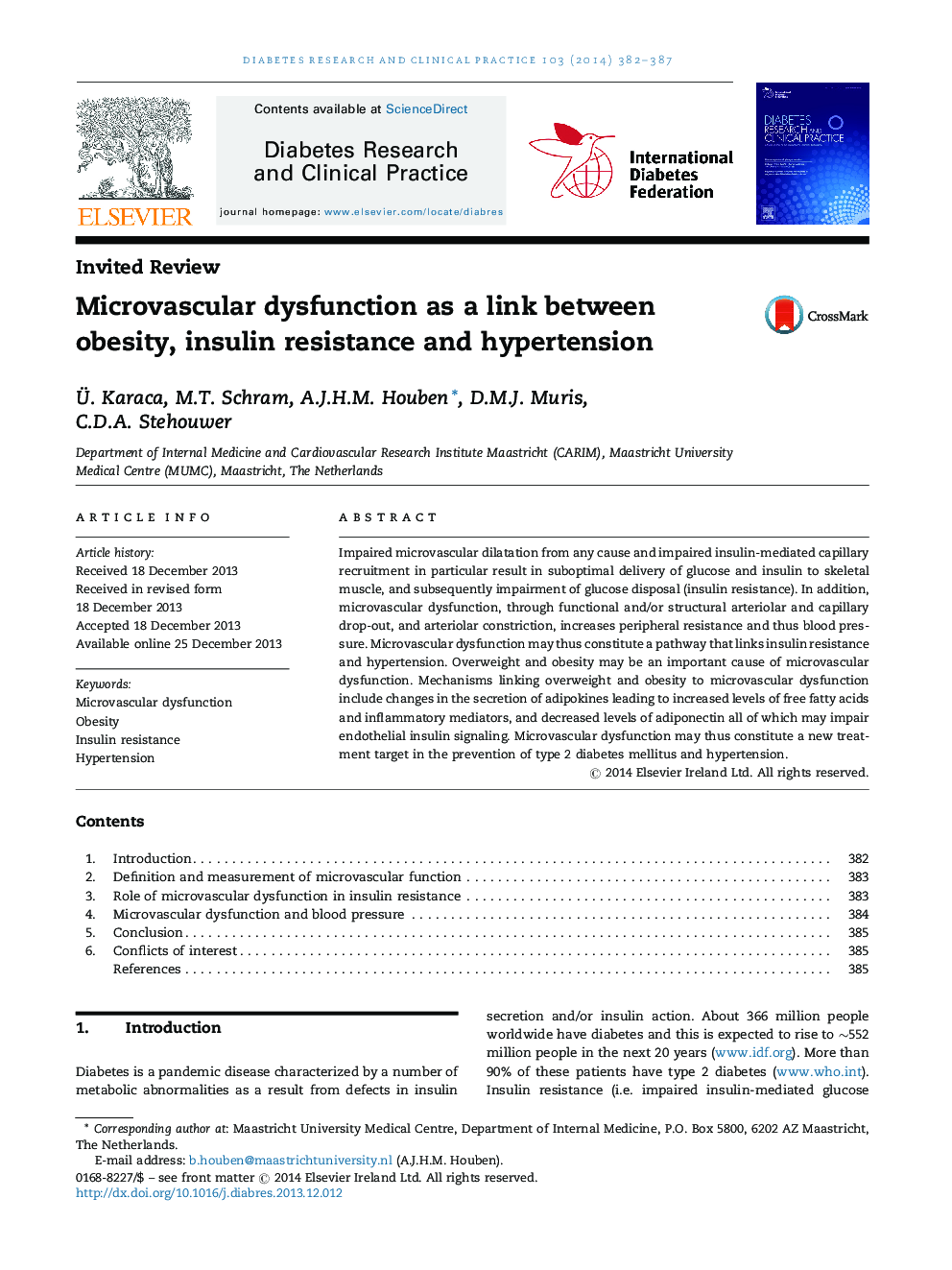| Article ID | Journal | Published Year | Pages | File Type |
|---|---|---|---|---|
| 5899383 | Diabetes Research and Clinical Practice | 2014 | 6 Pages |
Abstract
Impaired microvascular dilatation from any cause and impaired insulin-mediated capillary recruitment in particular result in suboptimal delivery of glucose and insulin to skeletal muscle, and subsequently impairment of glucose disposal (insulin resistance). In addition, microvascular dysfunction, through functional and/or structural arteriolar and capillary drop-out, and arteriolar constriction, increases peripheral resistance and thus blood pressure. Microvascular dysfunction may thus constitute a pathway that links insulin resistance and hypertension. Overweight and obesity may be an important cause of microvascular dysfunction. Mechanisms linking overweight and obesity to microvascular dysfunction include changes in the secretion of adipokines leading to increased levels of free fatty acids and inflammatory mediators, and decreased levels of adiponectin all of which may impair endothelial insulin signaling. Microvascular dysfunction may thus constitute a new treatment target in the prevention of type 2 diabetes mellitus and hypertension.
Related Topics
Life Sciences
Biochemistry, Genetics and Molecular Biology
Endocrinology
Authors
Ã. Karaca, M.T. Schram, A.J.H.M. Houben, D.M.J. Muris, C.D.A. Stehouwer,
